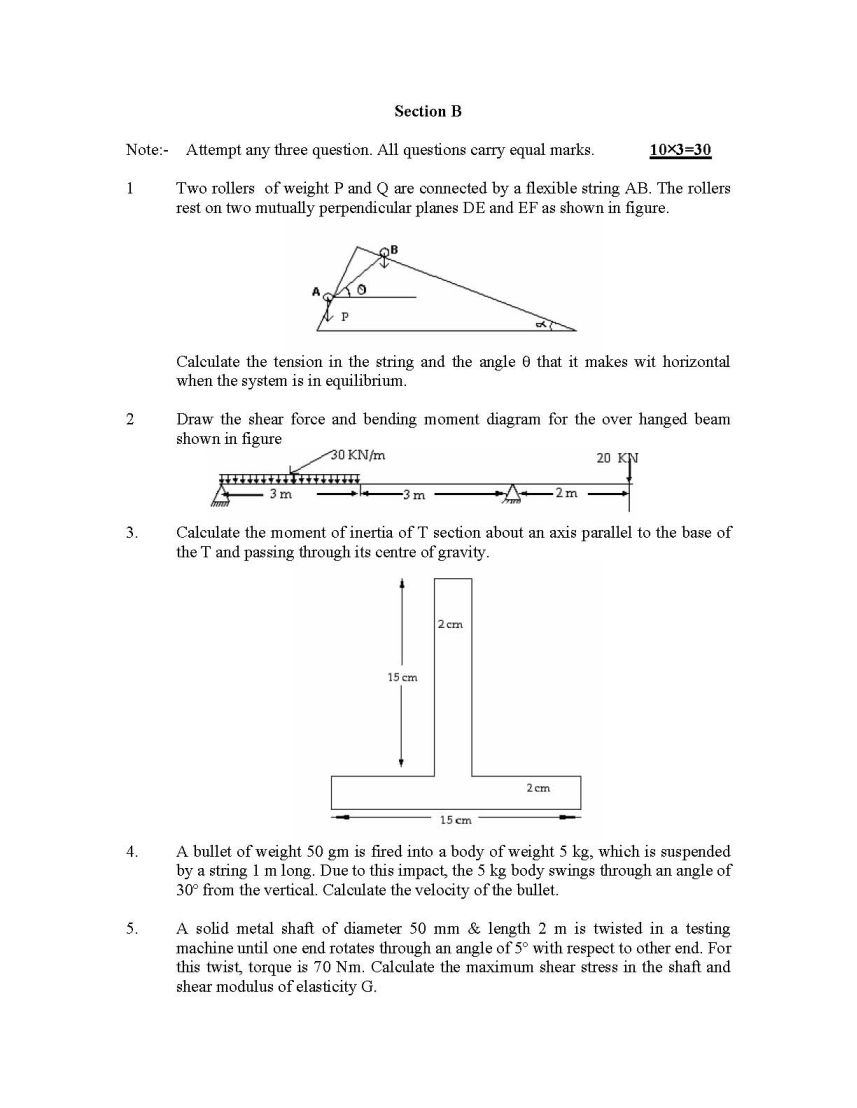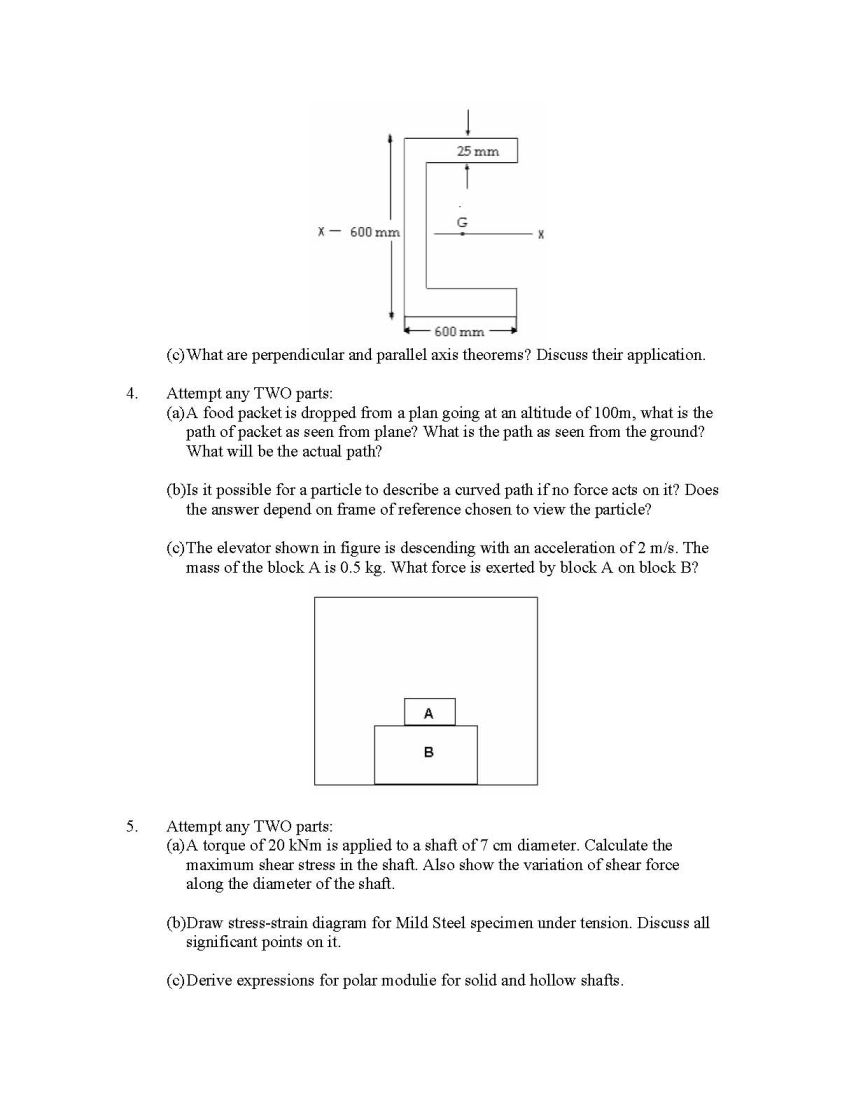|
#2
7th October 2014, 01:33 PM
| |||
| |||
| Re: Mechanical Engineering Question Paper
Mechanical engineering is that which applies the principles of engineering, physics and materials science for the design, analysis, manufacturing, and maintenance of mechanical systems. Mechanical is the branch of engineering that involves the design, production, and operation of machinery and tools. I am giving you question paper of mechanical engineering final: Model Question Paper Engg. Mech. [EME 102/202] Section A Note:- Attempt all questions. All questions carry equal marks. 10×2=20 1. The resultant of two equal forces of magnitude ‘P’ acting at an angle α with each other is ____________. 2. If ‘j’ represents the number of joints and ‘m’ represents number of members of a truss. The condition for perfect truss is ____________, and the condition for deficient truss is ___________. 3. The expression for the moment of inertia of a triangle, in term of its base ‘a’ and height ‘h’, about its (triangle) base is given as ____________. 4. The range of projectile is maximum when the angle of projection is _________ 5. In a cantilever beam carrying a concentrated load at the free end, the bending moment will be zero at ___________, and maximum at _____________. 6. A particle inside a hollow sphere of radius r having coefficient of friction can rest up to height equal to (a) r/2 (b) r/4 (c) r/8 (d) 0.134r 7. Which of the following is/are statically indeterminate beam(s)? (a) Cantilever beam (b) Simply supported beam (c) continuous beam (d) None of the above 8. The C.G. of a solid hemisphere lies on the central radius at a distance (a) 3r/2 from the plane base (b) 3r/4 from the plane base (c) 3r/5 from the plane base (d) 3r/8 from the plane base 9. Three perfectly elastic and similar balls are lying on the floor. When one is struck with a velocity ‘v’ it strikes second and onwards third. What will be their resultant velocity? (a) v (b) v/2 (c) v/3 (d) v/4 10 Hooke’s law is valid up to (a) Elastic limit (b) Proportionality limit (c) Yield point (d) No limit For full question I am uploading a pdf file which is free to download:     |
